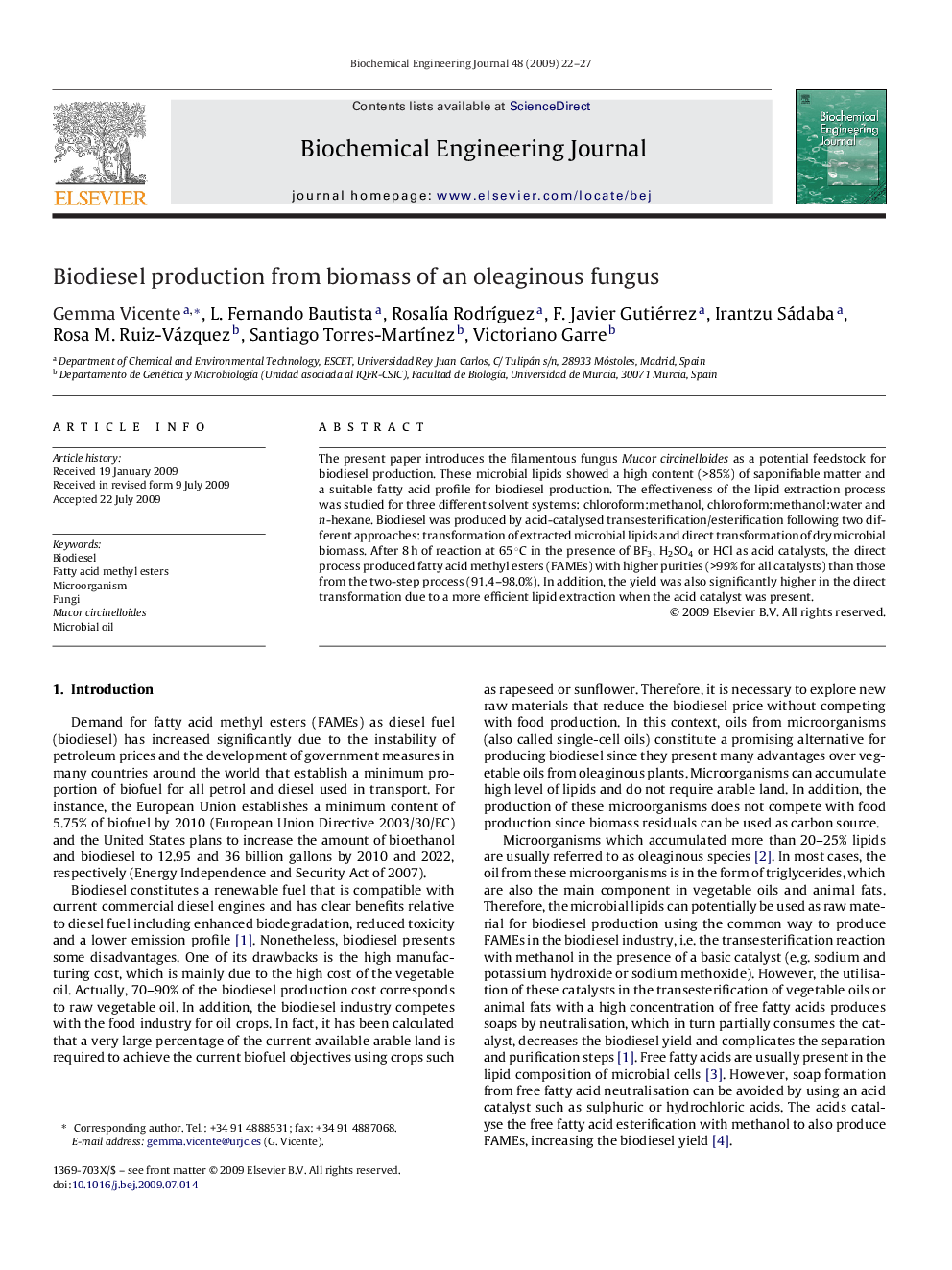| Article ID | Journal | Published Year | Pages | File Type |
|---|---|---|---|---|
| 4049 | Biochemical Engineering Journal | 2009 | 6 Pages |
The present paper introduces the filamentous fungus Mucor circinelloides as a potential feedstock for biodiesel production. These microbial lipids showed a high content (>85%) of saponifiable matter and a suitable fatty acid profile for biodiesel production. The effectiveness of the lipid extraction process was studied for three different solvent systems: chloroform:methanol, chloroform:methanol:water and n-hexane. Biodiesel was produced by acid-catalysed transesterification/esterification following two different approaches: transformation of extracted microbial lipids and direct transformation of dry microbial biomass. After 8 h of reaction at 65 °C in the presence of BF3, H2SO4 or HCl as acid catalysts, the direct process produced fatty acid methyl esters (FAMEs) with higher purities (>99% for all catalysts) than those from the two-step process (91.4–98.0%). In addition, the yield was also significantly higher in the direct transformation due to a more efficient lipid extraction when the acid catalyst was present.
